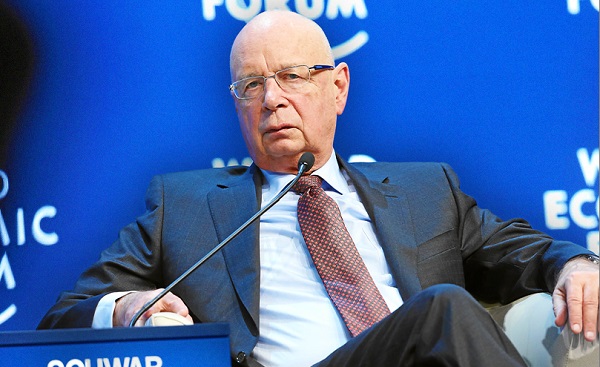Alberta
Province removes cost for residential addiction treatment

From the Province of Alberta
Removing financial barriers to addiction treatment
Alberta’s government has eliminated user fees for all Albertans accessing publicly funded addiction treatment beds.
Historically, Albertans were charged a $40 per day user fee for residential addiction treatment, often paid for privately or covered by Alberta Supports. This change, for example, would save patients participating in 60-day publicly funded residential addiction treatment roughly $2,400 that they would have paid out of pocket.
This cost prohibited many Albertans from accessing residential addiction treatment, including students, senior citizens, and people in the workforce who make too much to qualify for Income Support, but not enough to pay privately.
“For the first time in Alberta’s history, publicly funded addiction treatment will be extended to all Albertans. Previously, people struggling with addiction could only access residential addiction treatment if they received Alberta Supports or paid privately. We are giving all Albertans – regardless of their financial situation – the opportunity to recover and build a better life. Recovery is for everyone.”
This change drastically expands access to residential addiction treatment for all Albertans, transforming the system to make treatment accessible to everyone.
“It’s hard to see people who need treatment have to make difficult decisions about how to pay for it. Improving access so that people can get the help they need, without worrying about the financial cost, will change people’s lives, especially during a time of economic uncertainty. This will help Albertans get the support they need now and into the future.”
“Over the years that PEP has supported family recovery, we have heard numerous stories of life-time savings being depleted and homes being re-mortgaged to provide for a loved one’s step into treatment and recovery. The financial strain also impacts the family’s health and wellness in too many ways to mention. The magnitude of this shift in access and support to Albertans is huge.”
In lieu of requiring user fees from Albertans, the Alberta government has introduced a new standardized funding program for licensed agencies providing publicly funded addiction treatment services. This will result in better outcomes for Albertans as well as more consistent and stable funding for operators.
Albertans struggling with addiction can contact the Addiction Helpline at 1-866-332-2322 for support, information and referral to services. The toll-free, confidential helpline operates 24 hours a day, seven days a week.
Quick facts
- The elimination of user fees applies only to Albertans accessing publicly funded addiction treatment beds.
- The RATA supports were accessed by clients in the Assured Income for the Severely Handicapped (AISH) and Income Support programs.
- The RATA benefit was previously accessed by about 200 AISH and 2,500 Income Support clients each year.
- In 2019, Alberta’s government licensed all treatment providers under the Mental Health Services Protection Act.
- Last year, the provincial government announced $140 million over four years to enhance the mental health and addiction care system and treat 4,000 more individuals.
- Alberta’s Recovery Plan provides a total of $25 million in capital funding to build five recovery communities across the province. The five recovery communities will add 400 publicly funded treatment beds to the province, which will have the potential to help more than 3,200 Albertans over two years.
Alberta
Made in Alberta! Province makes it easier to support local products with Buy Local program

Show your Alberta side. Buy Local. |
When the going gets tough, Albertans stick together. That’s why Alberta’s government is launching a new campaign to benefit hard-working Albertans.
Global uncertainty is threatening the livelihoods of hard-working Alberta farmers, ranchers, processors and their families. The ‘Buy Local’ campaign, recently launched by Alberta’s government, encourages consumers to eat, drink and buy local to show our unified support for the province’s agriculture and food industry.
The government’s ‘Buy Local’ campaign encourages consumers to buy products from Alberta’s hard-working farmers, ranchers and food processors that produce safe, nutritious food for Albertans, Canadians and the world.
“It’s time to let these hard-working Albertans know we have their back. Now, more than ever, we need to shop local and buy made-in-Alberta products. The next time you are grocery shopping or go out for dinner or a drink with your friends or family, support local to demonstrate your Alberta pride. We are pleased tariffs don’t impact the ag industry right now and will keep advocating for our ag industry.”
Alberta’s government supports consumer choice. We are providing tools to help folks easily identify Alberta- and Canadian-made foods and products. Choosing local products keeps Albertans’ hard-earned dollars in our province. Whether it is farm-fresh vegetables, potatoes, honey, craft beer, frozen food or our world-renowned beef, Alberta has an abundance of fresh foods produced right on our doorstep.
Quick facts
- This summer, Albertans can support local at more than 150 farmers’ markets across the province and meet the folks who make, bake and grow our food.
- In March 2023, the Alberta government launched the ‘Made in Alberta’ voluntary food and beverage labelling program to support local agriculture and food sectors.
- Through direct connections with processors, the program has created the momentum to continue expanding consumer awareness about the ‘Made in Alberta’ label to help shoppers quickly identify foods and beverages produced in our province.
- Made in Alberta product catalogue website
Related information
Alberta
Province to expand services provided by Alberta Sheriffs: New policing option for municipalities

Expanding municipal police service options |
Proposed amendments would help ensure Alberta’s evolving public safety needs are met while also giving municipalities more options for local policing.
As first announced with the introduction of the Public Safety Statutes Amendment Act, 2024, Alberta’s government is considering creating a new independent agency police service to assume the police-like duties currently performed by Alberta Sheriffs. If passed, Bill 49 would lay additional groundwork for the new police service.
Proposed amendments to the Police Act recognize the unique challenges faced by different communities and seek to empower local governments to adopt strategies that effectively respond to their specific safety concerns, enhancing overall public safety across the province.
If passed, Bill 49 would specify that the new agency would be a Crown corporation with an independent board of directors to oversee its day-to-day operations. The new agency would be operationally independent from the government, consistent with all police services in Alberta. Unlike the Alberta Sheriffs, officers in the new police service would be directly employed by the police service rather than by the government.
“With this bill, we are taking the necessary steps to address the unique public safety concerns in communities across Alberta. As we work towards creating an independent agency police service, we are providing an essential component of Alberta’s police framework for years to come. Our aim is for the new agency is to ensure that Albertans are safe in their communities and receive the best possible service when they need it most.”
Additional amendments would allow municipalities to select the new agency as their local police service once it becomes fully operational and the necessary standards, capacity and frameworks are in place. Alberta’s government is committed to ensuring the new agency works collaboratively with all police services to meet the province’s evolving public safety needs and improve law enforcement response times, particularly in rural communities. While the RCMP would remain the official provincial police service, municipalities would have a new option for their local policing needs.
Once established, the agency would strengthen Alberta’s existing policing model and complement the province’s current police services, which include the RCMP, Indigenous police services and municipal police. It would help fill gaps and ensure law enforcement resources are deployed efficiently across the province.
Related information
-

 2025 Federal Election2 days ago
2025 Federal Election2 days agoBREAKING: THE FEDERAL BRIEF THAT SHOULD SINK CARNEY
-

 John Stossel2 days ago
John Stossel2 days agoClimate Change Myths Part 2: Wildfires, Drought, Rising Sea Level, and Coral Reefs
-

 2025 Federal Election2 days ago
2025 Federal Election2 days agoCHINESE ELECTION THREAT WARNING: Conservative Candidate Joe Tay Paused Public Campaign
-

 Media2 days ago
Media2 days agoCBC retracts false claims about residential schools after accusing Rebel News of ‘misinformation’
-

 Business2 days ago
Business2 days ago‘Great Reset’ champion Klaus Schwab resigns from WEF
-

 Bjorn Lomborg2 days ago
Bjorn Lomborg2 days agoNet zero’s cost-benefit ratio is CRAZY high
-

 International2 days ago
International2 days agoPope Francis’ funeral to take place Saturday
-

 Business16 hours ago
Business16 hours agoTrump: China’s tariffs to “come down substantially” after negotiations with Xi



